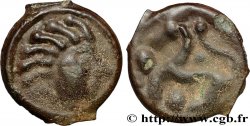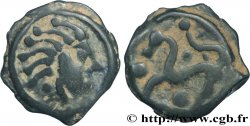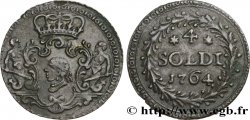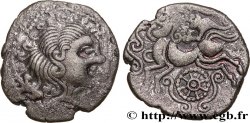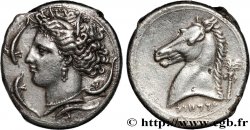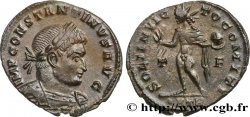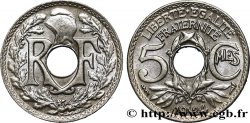v59_0721 - SENONES (Area of Sens) Statère globulaire à la croix, en bronze
MONNAIES 59 (2013)
Starting price : 300.00 €
Estimate : 500.00 €
Realised price : 767.00 €
Number of bids : 3
Maximum bid : 850.00 €
Starting price : 300.00 €
Estimate : 500.00 €
Realised price : 767.00 €
Number of bids : 3
Maximum bid : 850.00 €
Type : Statère globulaire à la croix, en bronze
Date: c. 100-80 AC.
Metal : gold
Diameter : 13 mm
Weight : 4,07 g.
Rarity : R1
Coments on the condition:
Très bel exemplaire de ce type en bronze, avec une croix bien nette et une agréable patine verte, avec des zones hétérogènes
Catalogue references :
Obverse
Obverse legend : ANÉPIGRAPHE.
Obverse description : Lisse avec une petite croix en relief.
Reverse
Reverse legend : ANÉPIGRAPHE.
Reverse description : Lisse.
Commentary
Cet exemplaire en bronze est très intéressant. Sans présumer de son aspect dans l’antiquité, bien que l’aspect du bronze puisse ressembler à l’or, il est fort probable qu’il ait du être recouvert d’or pour tromper nos ancêtres ; plus aucune trace n’en subsiste !
Ces statères, d’une typologie très simple, mais d’une technologie complexe, ont malheureusement fait récemment parler d’eux, avec le vol du fameux trésor de Saint-Denis-les-Sens en juin 2012.
D’une simplification extrême, ce statère montre la différence entre notre conception moderne d'une belle monnaie et la conception antique d'une monnaie de valeur ; ce statère de 7,44 grammes d'or valait certainement plus qu'un beau statère des Parisii mais en moins bon or et plus léger ! Il est d’ailleurs intéressant de noter que ce type était représenté aux côtés des 53 statères parisii dans le trésor de Puteaux découvert en 1950. J.-B. Colbert de Beaulieu proposait ces statères globulaires à la croix comme “le premier monnayage d’or des Parisii ?”.
Ces statères, d’une typologie très simple, mais d’une technologie complexe, ont malheureusement fait récemment parler d’eux, avec le vol du fameux trésor de Saint-Denis-les-Sens en juin 2012.
D’une simplification extrême, ce statère montre la différence entre notre conception moderne d'une belle monnaie et la conception antique d'une monnaie de valeur ; ce statère de 7,44 grammes d'or valait certainement plus qu'un beau statère des Parisii mais en moins bon or et plus léger ! Il est d’ailleurs intéressant de noter que ce type était représenté aux côtés des 53 statères parisii dans le trésor de Puteaux découvert en 1950. J.-B. Colbert de Beaulieu proposait ces statères globulaires à la croix comme “le premier monnayage d’or des Parisii ?”.








 Report a mistake
Report a mistake Print the page
Print the page Share my selection
Share my selection Ask a question
Ask a question Consign / sell
Consign / sell
 Full data
Full data